"Sashimi" is a traditional Japanese dish where raw fish is simply eaten with sauces like soy sauce.
I was first captivated by sashimi when I visited a Japanese restaurant with my family as a middle school student. I remember being amazed by the deliciousness of the fish that the chef prepared right in front of us, tasting it in its freshest form.
The charm of sashimi is, above all, being able to taste fresh, seasonal fish. Various seafood reaches its peak of deliciousness in different seasons, and comparing seasonal sashimi is a blissful experience.
Another appeal is being able to enjoy the original taste of the fish with simple seasonings like soy sauce and wasabi. It also pairs excellently with sake or beer, making it an indispensable part of Japanese dining.
In this article, I'll navigate you through the deep world of sashimi. It's packed with information to help you understand sashimi more deeply, including representative types of seafood, tips for delicious eating, and types of restaurants where you can eat sashimi.
I'll convey the charm of sashimi to you without leaving anything out, including my own experiences!
What is Sashimi?
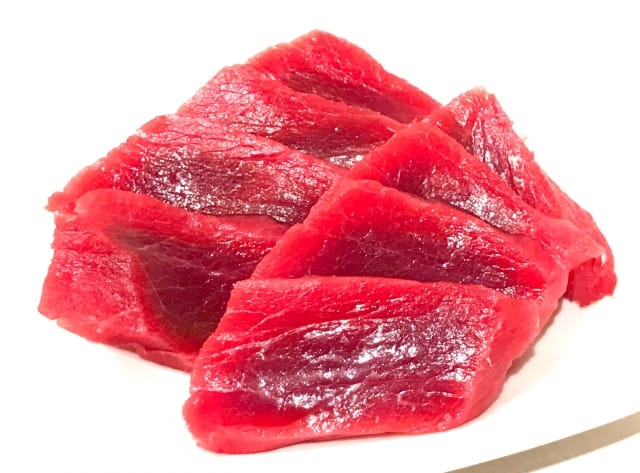
Sashimi is a traditional Japanese dish where fresh seafood is thinly sliced and eaten raw. It often uses seasonal fish, emphasizing the maximum use of the ingredient's flavor.
It's typically eaten with condiments like soy sauce and wasabi, and the chef's skill shines in the cutting and presentation. The difference from sushi is the presence or absence of rice. While sashimi is about tasting the fish alone, sushi is characterized by placing the fish on vinegared rice.
Why Japanese People Love Sashimi
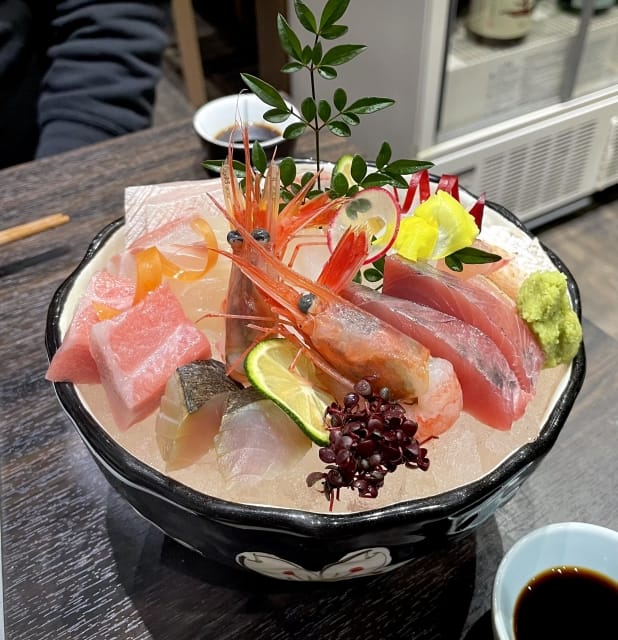
Japan, surrounded by the sea on all sides, is a treasure trove of fresh seafood, and sashimi has been deeply rooted in Japanese food culture for a long time. For Japanese people who value seasonal tastes, the changing sashimi ingredients throughout the seasons are very attractive.
The simple cooking method that brings out the taste of the ingredients is also a fundamental aspect of Japanese cuisine, and one of the reasons why Japanese people love sashimi.
In recent years, with the increasing health consciousness, the popularity of sashimi, which is low in calories and high in nutrition, has risen further. Also, the delicate presentation and seasoning well match the Japanese aesthetic sense.
I myself can't help but feel the Japanese appreciation for seasonality through sashimi, which changes its expression with each season.
Representative Types of Sashimi
In Japan, various types of seafood are eaten as sashimi. Here, I'll introduce some representative types of sashimi that are also my Japanese favorites.
Tuna (Akami, Chutoro, Otoro)
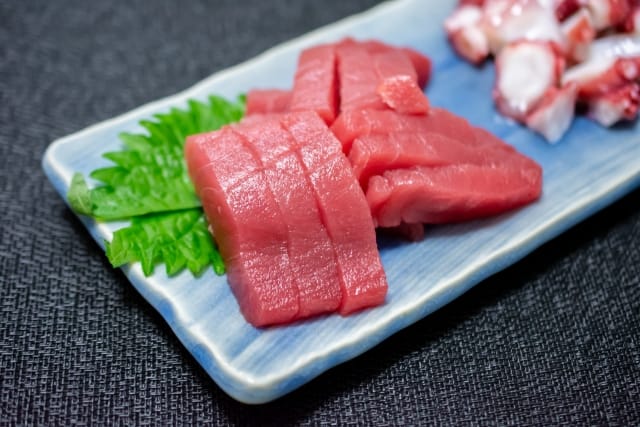
Tuna can be said to be the representative of sashimi. Akami has a light taste, while toro is characterized by its rich umami.
My recommendation is the "assortment" where you can taste both akami and toro. Adding green onions or shiso leaves makes it even more delicious. Every time I bring tuna sashimi to my mouth, I feel grateful for the blessings of the sea.
Yellowtail (Buri)
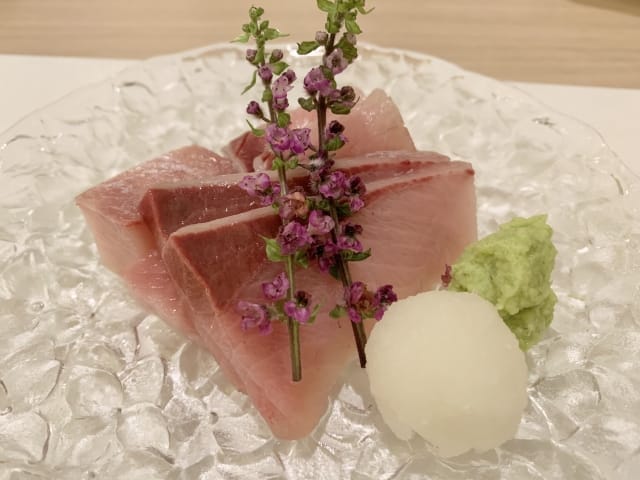
Yellowtail sashimi, which is fatty and has a smooth texture, is one of my big favorites. It becomes even more delicious when eaten with ponzu soy sauce or grated daikon radish. The umami of the yellowtail and the crisp texture of the daikon harmonize beautifully, making me feel happy.
Salmon
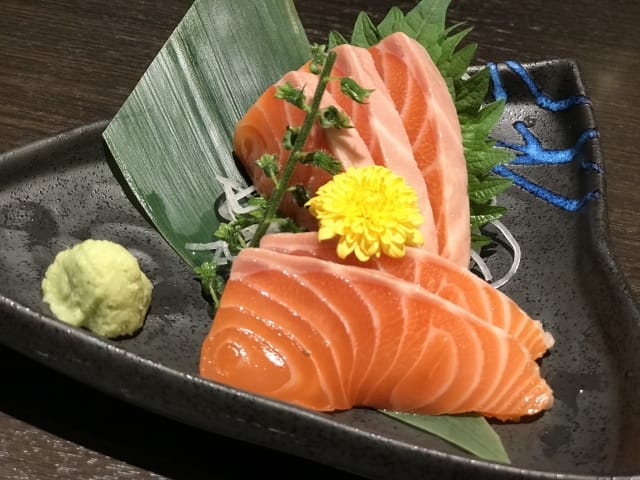
Salmon is charming with its creamy texture and elegant fatty umami. Just dipping it in soy sauce to eat is a blissful taste. The melting texture of salmon is the best.
Squid
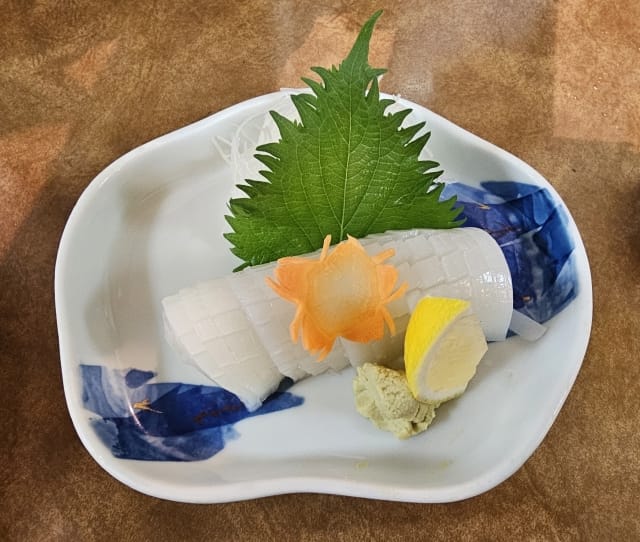
Squid, characterized by its firm texture and subtle sweetness, is one of the sashimi that even children can easily eat. I, too, often ate squid sashimi since I was a child.
Fresh squid has a good texture, and the more you chew, the more the sweetness spreads. When I was a child, I used to eat only squid at conveyor belt sushi restaurants.
Octopus
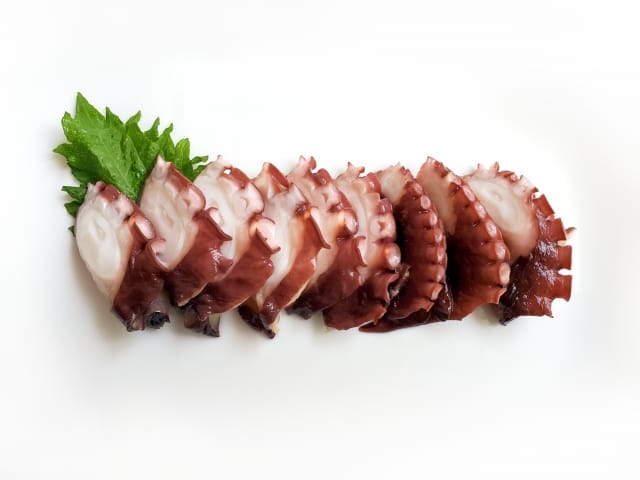
Octopus has a crunchy texture and subtle sweetness. Some people might not like the slightly hard texture, but fresh octopus sashimi is exquisite.
While takoyaki is also delicious, I recommend eating it as sashimi to directly experience the original taste of octopus.
Enjoying Seasonal Seafood
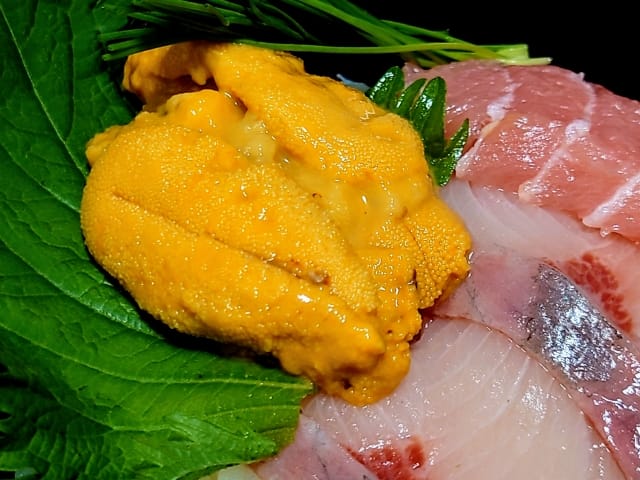
One of the great charms of sashimi is that the types you can taste change with the seasons. Spring brings squid and sea bream, summer brings horse mackerel and mackerel, autumn brings Pacific saury and amberjack, and winter brings yellowtail.
Also, seasonal and specialty seafood differ by region. For example, northern Hokkaido is famous for salmon. Enjoying the taste unique to each place is also one of the pleasures of tasting sashimi.
I love that just looking at the vibrant fish lined up in markets across the country makes me feel the changing of the seasons.
How to Eat Sashimi
Now that we understand the basics and types of sashimi, let me introduce how to actually eat sashimi.
How to Eat Sashimi Deliciously
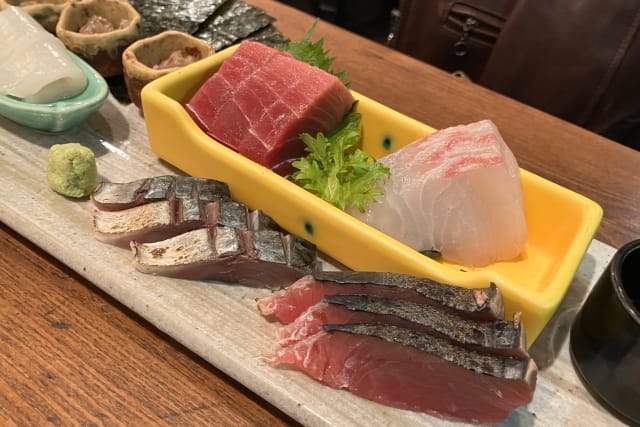
The key to eating delicious sashimi is to dip it in a small amount of soy sauce and enjoy the original taste of the fish. Wasabi might be challenging for foreigners, so it's fine to use just a small amount or none at all if you prefer.
What's important is to slowly savor the texture and umami of the sashimi. Please experience the sensation of it melting in your mouth.
I also recommend enjoying it with alcoholic beverages like sake, chilled sake, or beer. I particularly like chilled sake. A crisp, dry Japanese sake enhances the taste of sashimi.
By the way, my personal way of ending a sashimi meal is with a warm miso soup.
How to Use Sauces and Condiments
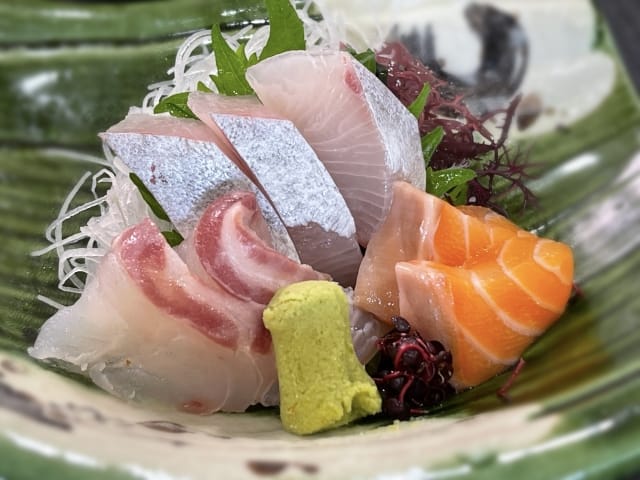
For soy sauce, lightly dip the sashimi and shake off any excess before eating. Dissolve wasabi in soy sauce little by little to adjust to your preferred spiciness.
It's better to avoid adding too much. The fresh scent of shiso leaves goes perfectly with sashimi.
Ponzu, with its refreshing citrus acidity, cuts through the fattiness of fish, making it perfect for yellowtail or salmon.
I love wrapping sashimi dipped in ponzu with grated daikon radish. There are as many ways to enjoy sashimi as there are people. Try to find your favorite combination.
Where to Eat Sashimi
In this section, I'll introduce where you can eat sashimi when you come to Japan.
Izakaya
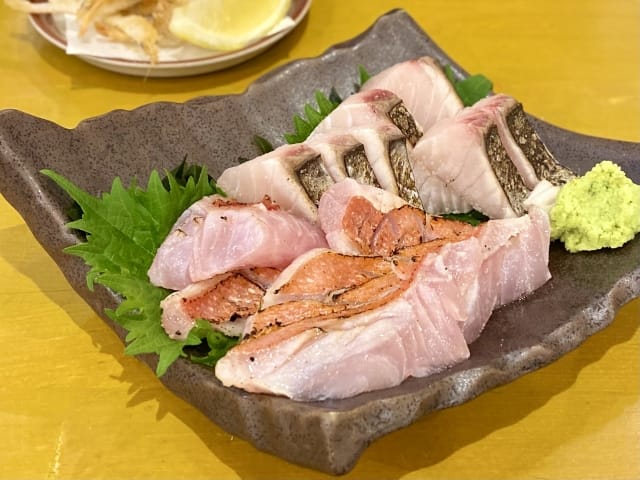
At izakayas, you can enjoy a wide variety of sashimi at reasonable prices. The quality might be slightly inferior compared to specialized shops, but the cost-performance is good.
At Japanese drinking parties, sashimi assortments often appear as a standard menu item. The charm of izakayas is that you can enjoy sashimi reasonably while sharing delicious drinks with friends.
Sushi Restaurants
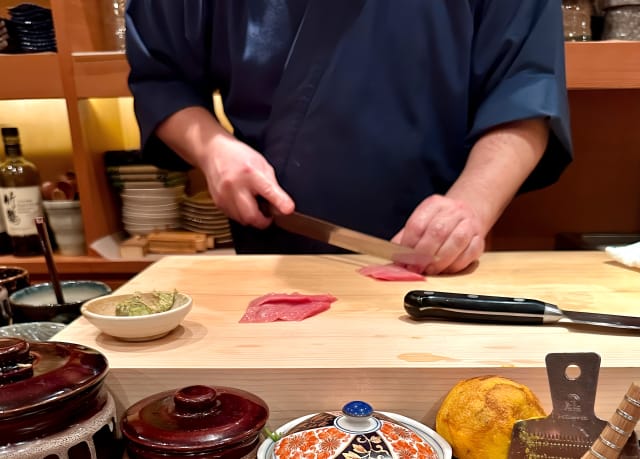
At sushi restaurants, one of the selling points is the high quality of the ingredients. The attraction is that you can taste fresh, high-quality sashimi. Especially at the counter seats, it's worth seeing as you can watch the chef prepare sushi right in front of you.
However, the prices are higher compared to izakayas, and it's often difficult to make reservations, so I recommend it for special occasions.
I treated my parents to a meal at our regular sushi restaurant for their wedding anniversary. I was glad to see their happy faces.
Fish Markets
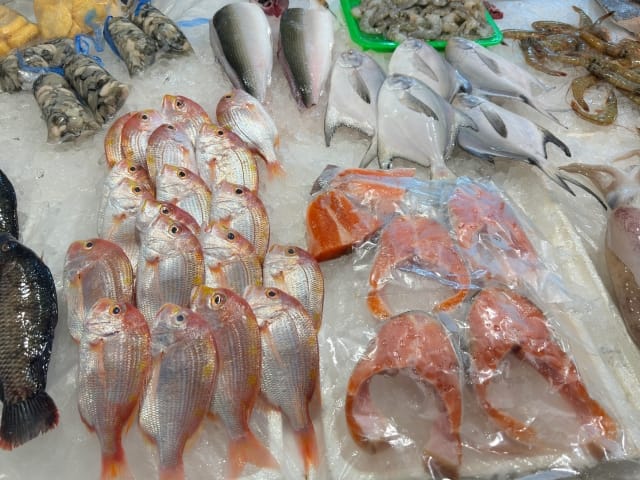
Many shops where you can taste delicious sashimi line up around fish markets like Tsukiji or Toyosu in Tokyo and other local fish markets.
If you're looking for the most delicious sashimi, the shops around the market where you can taste fresh fish directly from the market are the best. The sashimi using seafood that has just been landed is on a different level of freshness.
I love enjoying delicious sashimi while experiencing the lively atmosphere of the market.
Supermarkets and Department Stores
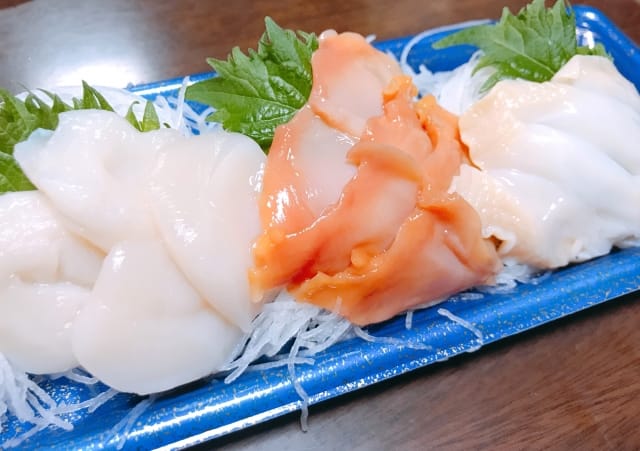
In Japan, you can easily buy sashimi at supermarkets or in the basement floors of department stores.
The quality is higher at department stores, but it's a bit more expensive. Supermarket sashimi is convenient for casually enjoying sashimi at home.
However, freshness is crucial for sashimi. The key is to eat it as soon as possible after purchase. I often buy sashimi at the supermarket for weekend drinking at home, but I always put it in the refrigerator and make sure to eat it on the same day.
Frequently Asked Questions About Sashimi
Finally, I'll answer some common questions that foreigners often have about sashimi.
What Precautions Should I Take When Eating Sashimi?
For sashimi bought at supermarkets or department stores, it's important to eat it quickly. Preferably on the same day. As it's raw, it doesn't keep for long. Especially in summer, don't carry it around outside for a long time, and put it in your hotel's refrigerator as soon as possible.
Also, there's a risk of parasites like anisakis in raw seafood. You don't need to worry too much, but caution is necessary, especially when purchased from supermarkets. You can eat with peace of mind at restaurants.
Is it Safe for Pregnant Women and Children to Eat Sashimi?
During pregnancy, it's wise to avoid it due to the risk of infections like listeria. I also recommend that young children don't eat it as their digestive functions are not fully developed. Those with concerns about their immune system should also moderate their intake.
What Alcohol Goes Well with Sashimi?
Japanese sake, especially chilled sake, is recommended. I pair dry, crisp-tasting sake with sashimi. Cold beer also goes excellently with sashimi.
What's the Difference Between Sashimi and Carpaccio?
Carpaccio is an Italian dish that's seasoned in advance with dressing. On the other hand, sashimi is basically served without seasoning to enjoy the original taste of the fish.
While carpaccio is eaten with Western-style dressing, sashimi is typically enjoyed with Japanese-style soy sauce and wasabi.
As we can see, sashimi is not just a dish, but a representation of Japanese food culture itself. It allows you to enjoy fresh ingredients while feeling the changes of the seasons and savoring seasonal tastes. Sashimi is a dish that condenses Japanese views of nature and aesthetics.
I really want foreign visitors to taste authentic sashimi using this guide as a reference.
You might be resistant to raw fish at first. You might be surprised by the smell of soy sauce or the spiciness of wasabi. But once you take a bite, you're sure to be moved by its delicate flavor!
